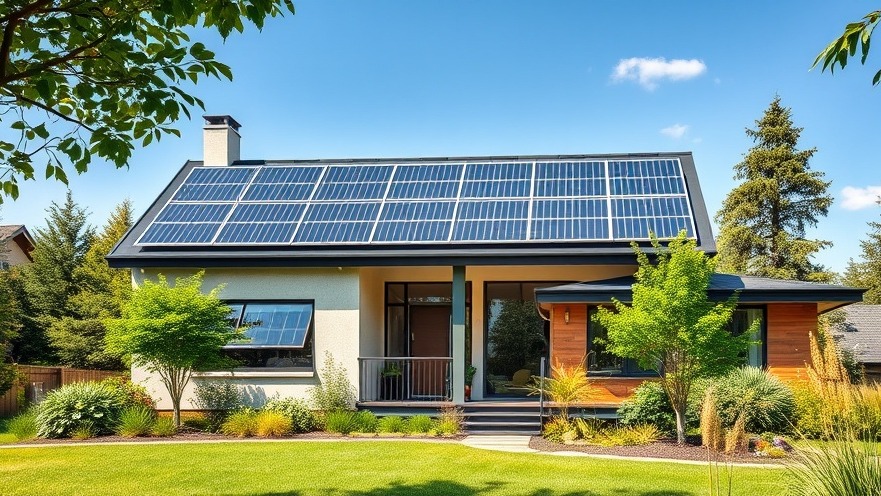
The Urgency of Retrofitting for Climate Resilience
In light of recent extreme weather events and rising temperatures, many homeowners are recognizing the need for immediate action in response to our changing climate. For those living in warmer climates, this can mean upgrading existing homes to promote energy efficiency. You might have experienced excessive heat waves, as detailed in a recent case where a region endured six consecutive days of sweltering temperatures above 40°C.
Seven Strategies for Retrofitting Your Home
When it comes to retrofitting, energy efficiency is key. Here are seven practical strategies anyone can adopt to enhance their homes while making sustainable changes:
Insulation Improvements: Start by addressing your home’s insulation, especially in the ceiling and walls. These areas account for significant heat loss and gain. Consider using reclaimed materials to further reduce your carbon footprint.
Air Sealing: Tackle drafts and air leaks by sealing gaps around doors and windows. This not only helps in maintaining comfortable indoor temperatures but also reduces energy consumption, thereby minimizing your overall carbon footprint.
Efficient Heating and Cooling Systems: Instead of installing split systems that only cool rooms, invest in a centralized air conditioning system if feasible. This method, while requiring upfront costs, offers optimal efficiency in both heating and cooling.
Window Upgrades: Replacing single-glazed windows with double or triple-glazed options significantly enhances energy efficiency. This upgrade can reduce heat gain during summers and heat loss during winters.
Landscaping for Energy Efficiency: Planting trees—especially deciduous ones—around the property can provide shade in the summer and reduce air conditioning reliance, while allowing sunlight in during the winter.
Transitioning to Renewable Energy: If feasible, consider adding solar panels. While the initial investment may be large, the long-term savings on energy bills and the environmental benefits are substantial.
Water Conservation Techniques: Implementing rainwater harvesting systems or installing low-flow fixtures can help in conserving resources, aligning with broader sustainability strategies.
The Broader Impact of Retrofitting
While these strategies may seem focused on individual households, the ripple effects can contribute positively towards a larger narrative of sustainability. By making energy-efficient improvements, you're not only fostering personal comfort and reducing your bills but also making a substantial impact on community resource consumption.
Community Collaboration for Sustainable Change
Home retrofitting can go beyond individual action. Encouraging discussions within your neighborhood about sustainability can lead to collective initiatives. Whether you collaborate on a local tree planting initiative or a community composting program, your efforts can enhance resilience at the grassroots level.
Final Emphasis on Action
The climate crisis is upon us, but the good news is that we each have the power to make a difference—starting at home. These changes not only benefit your household but also highlight the collective responsibility we share in addressing broader environmental impacts.
As you embark on your retrofitting journey, remember that every small change counts. For renters, it’s essential to communicate with landlords about potential upgrades and consider what energy-efficient features to look for in future homes. Together, we can drive the change needed for a more sustainable future.
 Add Row
Add Row  Add
Add 




Write A Comment